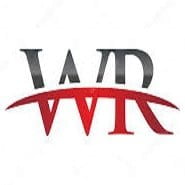-

-
Wikirise.com Advertise with Us HereStats: 4,783 members, 41,615 Posts
Number of Comments : 2,630
Date: Sunday, 24th November 2024
Proclamation ushers in the reign of King Charles III
By Godwin Emmanuel - September 11, 2022 | Categories: World Tags: Foreign
Share this post:

• Historic Event At St. James’s Palace Witnessed By Privy Council, Including Past PMs
• Late Sovereign Lady’s Funeral To Be Public Holiday
Amid pomp, pageantry, solemnity and history, the official reign of King Charles III began shortly after 10:00 a.m. yesterday at the St James Palace in London. It was witnessed by the late Queen Elizabeth II’s living prime ministers such as, Tony Blair, Gordon Brown, David Cameron, Theresa May, Boris Johnson and his successor, Liz Truss, who was the last Prime Minister the Queen appointed.
Though King Charles III’s reign had technically begun in Balmoral Castle, Scotland, on Thursday, when the 70-year reign of his 96-year old ‘beloved mama’ and monarch, Queen Elizabeth II, died, peacefully, surrounded by members of her family, the constitutional formality commenced after the proclamation and ascension proceedings yesterday morning.
The ceremony that ushered in his reign began after the Privy Council meeting at the same St. James’s Palace. In attendance were the Queen Consort, Camilla, the new Prince of Wales, William; the Archbishop of Canterbury and other members of the council invited.
Scores of senior politicians past and present, including Prime Minister Liz Truss and five of her predecessors, gathered in the ornate state apartments at St. James’s Palace for the meeting.
Though the Privy Council – made up of politicians and members of the royal family- has a little over 700 members, not all could be accommodated at St James Palace. Hence, only about 200 were invited to the historic event to witness the Proclamation.
The last time the Privy Council gathered for a proclamation was in 1952, when the Queen ascended the throne upon the death of her father. It is doubtful if any of the current council members witnessed the proclamation of the late monarch.
After his proclamation and oath, gun salutes followed in places such as nearby Hyde Park, the City of London and faraway in Edinburgh.
The Proclamation also held at the Royal Exchange in the City of London, just some metres away from St. Paul’s Cathedral.
Like he did during Friday’s recorded first message to the nation, King Charles III praised his ‘beloved mama’.
“I am deeply aware of this great inheritance and of the duties and heavy responsibilities of Sovereignty which have now passed to me. In taking up these responsibilities, I shall strive to follow the inspiring example I have been set in upholding constitutional government and to seek the peace, harmony, and prosperity of the peoples of these Islands and of the Commonwealth Realms and Territories throughout the world,” King said soon after being proclaimed Britain’s new monarch at the Accession Council at St James’s Palace in London.
King Charles III had pledged to follow his mother Queen Elizabeth II’s example of lifelong service in his inaugural address to Britain and the Commonwealth on Friday.
However, it may be months or even longer before Charles’ formal coronation. In Elizabeth’s case, her coronation came on 2 June, 1953 — 16 months after her accession on February 6, 1952, when her father, King George VI, died.
Charles has waited a lifetime to take the throne.
Many believe his accession to the throne is likely to fuel debate about the future of Britain’s largely ceremonial monarchy, seen by some as a symbol of national unity and others as an obsolete vestige of feudal history
King Charles III said that his heir William and his wife Kate have become the new Prince and Princess of Wales. He also expressed his love for Prince Harry & his wife Meghan Markle ‘who continue to build their lives overseas’
Also yesterday afternoon, King Charles III held an audience with the Archbishop of Canterbury Justin Welby in the 1844 Room of Buckingham. The royal family, to meet important guests, uses the 1844 Room, named to commemorate the 1844 visit by Russian Emperor Nicholas I.
It is where the Queen met the Japanese Emperor Akihito in 2007 and King Willem-Alexander of the Netherlands in 2018. She also recorded several of her traditional Christmas messages there.
The Archbishop of Canterbury, who is the leader of the Church of England, of which Charles is now the Supreme Governor of the church, was present yesterday morning for the Accession Council to sign the proclamation of Charles III as King.
MEANWHILE, Gov. Gen. Mary Simon and Prime Minister Justin Trudeau signed an order in council and a proclamation of accession that officially proclaimed King Charles III as Canada’s new monarch. Canada’s Chief Herald Samy Khalid then read it.
Gov. Gen. Mary Simon met with Prime Minister Justin Trudeau and his cabinet to sign an order in council and a proclamation of accession that officially announced the Queen’s death and proclaimed King Charles III as Canada’s new monarch.
Charles automatically became King of Canada upon the death of Queen Elizabeth. But the accession proclamation is issued by the Governor General on the advice of the federal Privy Council Office, according to the book Canada’s Deep Crown, co-authored by David E. Smith, Christopher McCreery and Jonathan Shanks.
With Queen Elizabeth’s death, Canada prepares for an official mourning period
Trudeau and Simon signed the documents at Rideau Hall on Saturday surrounded by cabinet. Canada’s Chief Herald Samy Khalid, followed by a 21-gun salute, then read it.
Speaking to reporters outside Rideau Hall after the proclamation, Intergovernmental Affairs Minister Dominic LeBlanc said Canadians should feel confident in King Charles’s ability to take on the role his mother held for 70 years.
“Canadians should be very proud that King Charles III will continue to exercise the constitutional responsibilities … in a way that will provide stability to Canadian institutions,” he said.